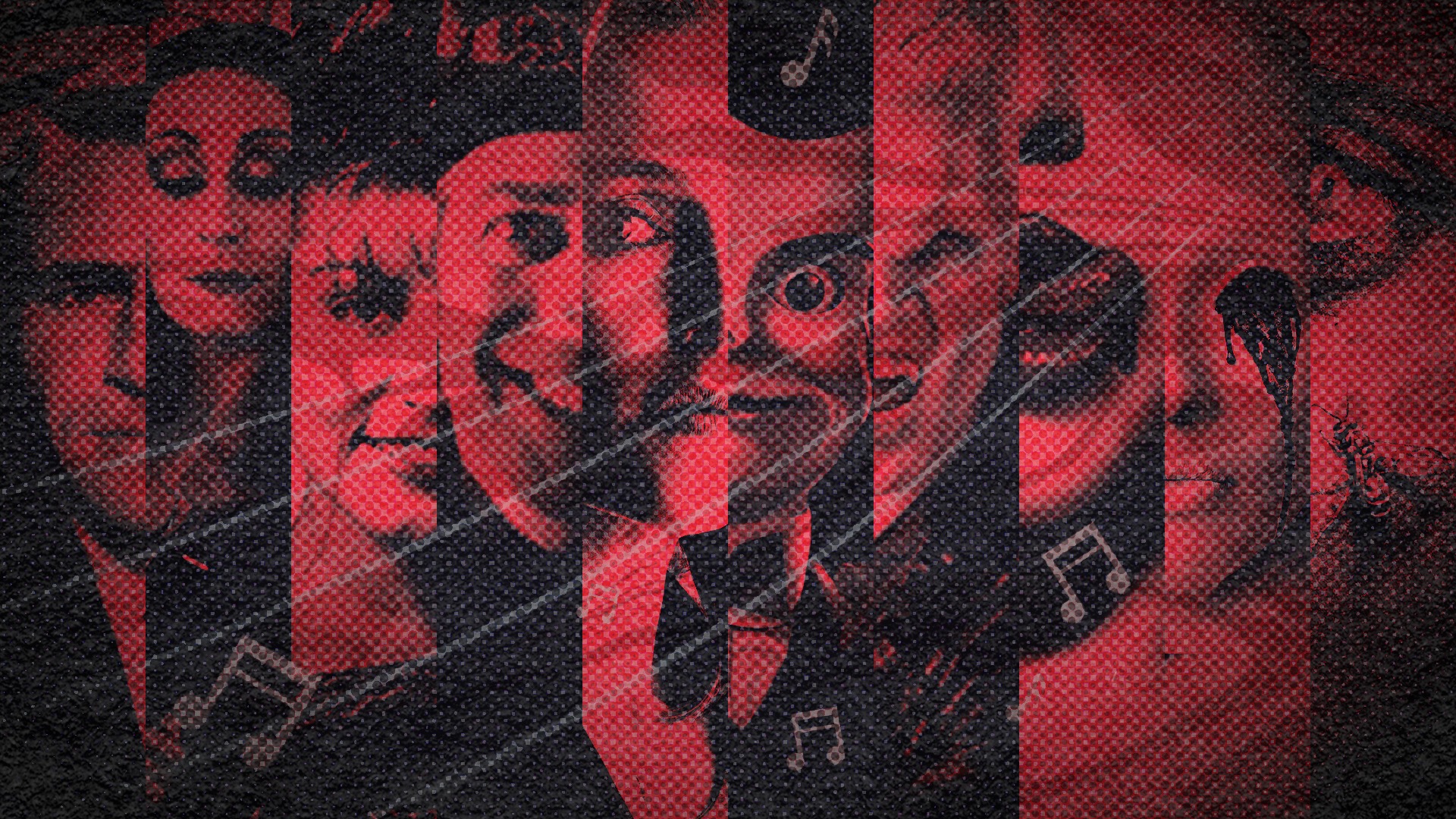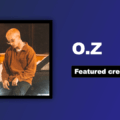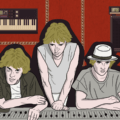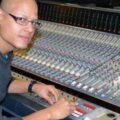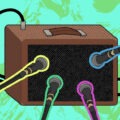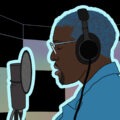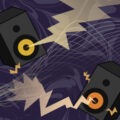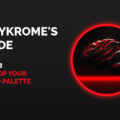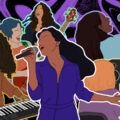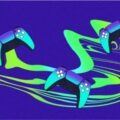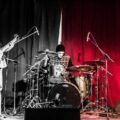Music can make or break a TV show. Memorable soundtracks stay with us for a lifetime, forever linking specific songs to our favourite childhood shows. But perhaps the most effective way to hook an audience right off the bat is with a strong theme song, perfectly timed with striking opening credits.
Horror relies just as much on audio as it does on visual scares. Moody melodies, unsettling sounds and instrumentation, and even catchy hooks, immediately help set the tone for the viewer. Genre TV shows have lots of room to play with for opening themes – some can be morbid and macabre, others more silly and spooky.
As we discussed in our Top 10 Horror Movie Scores Through the Decades, a truly haunting, well-executed score can become iconic and go down in horror history. In this list, we’ll take a look at 10 standout spooky TV series opening themes, from campy to truly terrifying, that will stay stuck in your head long after Halloween is over.
The Twilight Zone 1959 – 1964 (first series)
The Twilight Zone’s four-note dissonant melody played on electric guitar has stood the test of time. 60 years later, it’s still instantly recognizable, and successfully sets up the eerie and uncanny stories ahead. But despite the song being a perfect fit for the science fiction anthology series, composer Marius Constant initially wasn’t even aware his work had made the cut as the theme.
In an effort to save costs, CBS spliced together two royalty-free pieces from a stock library: “Milieu No. 2” and “Étrange No. 3” by Constant, who was then known for his classical ballet pieces. He discovered long after The Twilight Zone became a smash hit that he was, in fact, the composer behind the unmistakable opening music. An eventual court settlement gave the composer future rights to his work, though he would never receive compensation for the years of unpaid usage.
The Addams Family 1964-1966
Please note this list features spooky TV shows and not just pure horror! The Addams Family isn’t particularly scary, but the characters are endearingly funny freaks with a theme song to match. This is one of the only pieces we’ll discuss that comes with memorable lyrics, and its catchy melody will have you (literally) snapping your fingers and singing along: “They’re creepy and they’re kooky, Mysterious and spooky, They’re all together ‘ooky,’ The Addams Family!”
Though the show has had many film and TV adaptations, the original 1960s version written by Vic Mizzy, featuring a whimsical harpsichord and finger snaps, is the one we still know and love today.
Twin Peaks 1990 – 1991 (original run)
The beloved Twin Peaks soundtrack was not the first collaboration between creator David Lynch and composer Angelo Badalamenti, but it was perhaps their most influentional. The entire score received international praise for its jazzy and uncanny sounds playing alongside surreal visuals, and the main theme won a Best Pop Instrumental Performance at the 1991 Grammy Awards.
Though the main theme is certainly haunting, it’s a lot more nostalgic than it is creepy. With just a short three-note motif, viewers soar over a forested, mountainous landscape in the Twin Peaks dreamlike opening sequence. The song is an instrumental version of Julee Cruise’s “Falling”, written by Badalamenti. A lesser known fact is that keyboardist Kinny Landrum is responsible for the mysterious synth tone used.
For years the source was kept secret, with many wondering whether the sound was a bass or electric guitar. It was eventually revealed to be a Duane Eddy twangy guitar sampler on Landrum’s Emulator II synthesizer, played an octave down and doubled with a low guitar sound.
Are You Afraid of the Dark? 1990 – 1996 & Goosebumps 1995 – 1998
We couldn’t pick just one 90s Canadian kids horror anthology! The earworm opening tracks for Goosebumps and Are you Afraid of the Dark? are both forever burned into our (potentially traumatized) minds.
The main theme for the series based on R.L. Stine’s children’s books still trends on TikTok, with its slightly creepy but mostly hokey vibe. When it comes to Are you Afraid of the Dark?, composer Jeff Zahn says the theme song came to him as he was waiting at the Montreal airport. He recorded the track at his home studio using standard synths like Roland 880s with another Montreal musician, Jeff Fisher. Folks who grew up in the era know the abandoned rowboat and windblown swing set images that come to mind upon listening.
The X-Files 1993 – 2002 (original series)
The X-Files’ atmospheric theme is almost synonymous with looking up into the sky and seeing neon green extraterrestrial activity. But the unmistakable piece was actually the product of a happy accident, with a contribution from composer Mark Snow’s wife.
Snow was playing around with ideas for the supernatural investigation series when he leaned his elbow on the keyboard and triggered an electronic delay effect that inspired the now-famous four-note arpeggio. Snow wasn’t excited about any of the sounds on his Emu Proteus/2 orchestral synthesizer, until he discovered a patch called “Whistling Joe”. He mixed the synths with a recording of his wife whistling the melody, and haunting history was made.
Buffy the Vampire Slayer 1997 – 2003
Horror themes often sound very true to the time, and the opening sequence to Buffy the Vampire Slayer, oozing with millennium punk rock energy, is no exception. The song perfectly portrays the show’s mix of gothic style and modern edginess, quickly switching from organ to fast-paced punchy guitar.
The supernatural show always kept music as a main component, featuring many real-life bands at Sunnydale’s popular club The Bronze. One of the acts that performed there, Nerf Herder, wrote the timeless theme song!
True Blood 2008 – 2014
Unlike most horror themes from this list which were composed specifically for a series, the opening music for vampire drama True Blood was a pre-existing song by country songwriter Jace Everett.
“Bad Things” dropped viewers into the pulpy, sexy mood of the show, and revived the artist’s career. The song had flopped when it was released in 2004, and led to Everett eventually losing his record deal. Then HBO approached him in 2008, and when the show’s popularity exploded, “Bad Things” finally charted in several countries. (A reminder to never give up on your music, even if it doesn’t immediately blow up upon release!)
American Horror Story 2011 – present
What makes Ryan Murphy’s American Horror Story theme both unique and recognizable, is that although it recycles its eerie melody, it still changes every season.
Former Nine Inch Nails band member Charlie Clouser is behind every main title in the series, always incorporating a noise piece by musician Cesar Davila-Irizarry, but evoking the different themes of the season, from witches to 80s slashers.
Stranger Things 2016 – present
Much like the It Follows score discussed in our previous Top 10 article, the music from Stranger Things was an instant modern classic the moment viewers tuned in to season 1 in 2016. The 80s nostalgic score calls on its synth-fuelled predecessors like John Carpenter’s Halloween, and includes many popular songs of the time (hello Kate Bush). The eerie pulsing theme song, however, holds its own and leads the way for a new generation of spooky TV and film.
Composers Michael Stein and Kyle Dixon, two of the musicians from the synthwave band S U R V I V E, built the Stranger Things theme off an old unused sketch, using arpeggiated analog bass synths. The track went on to win an Emmy for Outstanding Original Main Title Theme Music.
Yellowjackets 2021 – present
Our final spooky selection is 2021’s breakout Yellowjackets. The theme song “No Return” by Anna Waronker and Craig Wedren introduces a driving grungy bass, distorted vocals, and an angsty goth vibe nostalgic of the 90s era portrayed in the show’s flashbacks. Though it’s still a newcomer to the genre, fans quickly fell in love with the score, consisting both of popular hits and original choral music featuring a crescendo of distressing female voices. We can’t wait for season 2!
Written by Maryse Bernard
llustration by Yihong Guo
